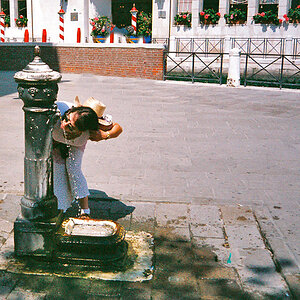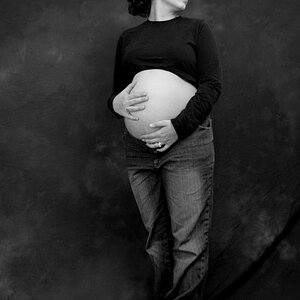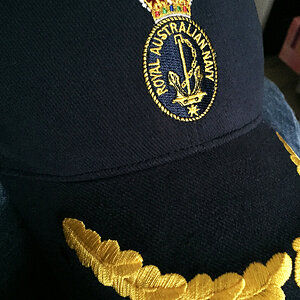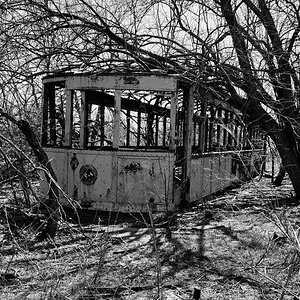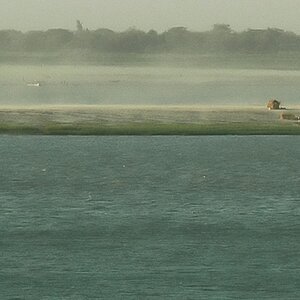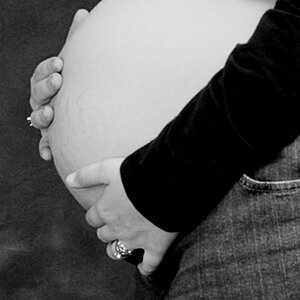Navigation
Install the app
How to install the app on iOS
Follow along with the video below to see how to install our site as a web app on your home screen.

Note: This feature currently requires accessing the site using the built-in Safari browser.
More options
You are using an out of date browser. It may not display this or other websites correctly.
You should upgrade or use an alternative browser.
You should upgrade or use an alternative browser.
Nikon F5, F100, N80?
- Thread starter Macro
- Start date
mattvillano
TPF Noob!
- Joined
- Dec 24, 2003
- Messages
- 92
- Reaction score
- 0
I'm not too familiar with the differences in the f5 and f100......I have an N80 and its obviously cheaper, its a pretty good camera from my perspective. It does have some small downfalls like a less durable plastic body and it can't take meter readings with non CPU lenses. Obviously if you don't care about money then go up to the f series but if your tight on cash give the N80 some consideration.
- Joined
- May 15, 2003
- Messages
- 5,275
- Reaction score
- 17
- Location
- Gilbert, AZ
- Website
- www.voodoocat.com
- Can others edit my Photos
- Photos NOT OK to edit
I don't think the F100 has a color matrix meter like the F5. It might also be a sturdier cam. I've heard you can drop the F5 from a building and it'll still work.
Another option if you don't need all the fancy bells and whistles is the N90. It is the entry level pro camera from Nikon.
Another option if you don't need all the fancy bells and whistles is the N90. It is the entry level pro camera from Nikon.
motcon
TPF Noob!
- Joined
- Jul 18, 2003
- Messages
- 1,410
- Reaction score
- 0
- Location
- usa. soon to be a euro boy.
- Website
- group-11.com
- Can others edit my Photos
- Photos OK to edit
voodoocat said:I don't think the F100 has a color matrix meter like the F5. It might also be a sturdier cam. I've heard you can drop the F5 from a building and it'll still work.
i shoot an f100 - it most certainly has matrix metering.
you could just look it up for yourself, macro:
http://home.wanadoo.nl/pmj/camcompare.html
- Joined
- May 15, 2003
- Messages
- 5,275
- Reaction score
- 17
- Location
- Gilbert, AZ
- Website
- www.voodoocat.com
- Can others edit my Photos
- Photos NOT OK to edit
I'm talking about the color matrix meter. The one that analyzes the colors and adjusts the meter accordingly.
somewhere said:The F5 comes with three new light meters. The familiar Nikon Matrix meter has undergone a transformation and is now a 3D color Matrix meter with a 1,005 pixels (they used to be called "segments"); the center-weighted meter has become the world's first variable size center-weighted meter; and the spot meter has grown to become five spot meters.
With 1,005 pixels in the Matrix meter's sensing array, the meter is designed to provide an enormous range of detection for brightness and contrast patterns; the pixels also measure RGB color, and thus take the color in a scene into account when making the exposure. The RGB sensors can also tell if fluorescent or tungsten light is in use. Adding color detection to the metering process gives the meter additional information for the most accurate scene identification. "In situations in which you'd normally have to compensate for color, the camera does it for you," said a Nikon spokesperson. "Taking into account light, distance and color, it's the most accurate automatic light meter ever created."
I guess I am curious as to why one would need an internal color matrix meter. I mean, how many people are looking for a color meter, and an internal one trustworthy enough?
Also, there is a huge difference in the pricing between the F100/F5 and the N80. You could buy 4-5 N80 bodies for the price of one of the others.
Also, there is a huge difference in the pricing between the F100/F5 and the N80. You could buy 4-5 N80 bodies for the price of one of the others.
- Joined
- May 15, 2003
- Messages
- 5,275
- Reaction score
- 17
- Location
- Gilbert, AZ
- Website
- www.voodoocat.com
- Can others edit my Photos
- Photos NOT OK to edit
I would venture to guess that the F5's color matrix meter is quite handy and most likely trustworthy. Especially since it's TTL you don't have to compensate for filters.
chris
No longer a newbie, moving up!
They are all great cameras but differ in price and facilities.
I bought a F80 to replace an aged Minolta manual 35mm SLR system (it had given excellent service but was just worn out after over 20 years of use). The F80 was easy to use and has most of the facilities that I had used with the Minoltas - depth of field preview, multiple exposure, exposure comopensation etc. I was very happy with it until I had the chance to buy a second body and tried the F100 and F5. I decided on the F5 but it is a big heavy camera; the size and weight does not bother me, I have big hands and had been used to carrying a medium format camera around but if this is a problem then the F100 is probably more suitable.
It is hard to imagine any normal mishap that could stop an F5 working, just dropping it on the floor would probably only result in minor cosmetic damage and it can also withstand brief total immersion in water so there is no need to be concerned about it when out in bad weather. It has just about every function imaginable including mirror lock-up, built-in eyepiece blind, superb meter facilities, self-checking shutter etc.
The F100 appears to be a slightly 'cut down' version of the F5 with most of the facilities and performance in a smaller package.
The F80 is the lightweight of the three cameras - you definitely don't want to drop this one on the floor - but it performs very well and the metering system has never let me down. I use the F80 when I don't want the bulk and weight of the F5.
The F80 is about 20% of the cost of an F5 so you need to carefully consider what facilities and level of robustness you need and weigh these against the cost and convenience.
I bought a F80 to replace an aged Minolta manual 35mm SLR system (it had given excellent service but was just worn out after over 20 years of use). The F80 was easy to use and has most of the facilities that I had used with the Minoltas - depth of field preview, multiple exposure, exposure comopensation etc. I was very happy with it until I had the chance to buy a second body and tried the F100 and F5. I decided on the F5 but it is a big heavy camera; the size and weight does not bother me, I have big hands and had been used to carrying a medium format camera around but if this is a problem then the F100 is probably more suitable.
It is hard to imagine any normal mishap that could stop an F5 working, just dropping it on the floor would probably only result in minor cosmetic damage and it can also withstand brief total immersion in water so there is no need to be concerned about it when out in bad weather. It has just about every function imaginable including mirror lock-up, built-in eyepiece blind, superb meter facilities, self-checking shutter etc.
The F100 appears to be a slightly 'cut down' version of the F5 with most of the facilities and performance in a smaller package.
The F80 is the lightweight of the three cameras - you definitely don't want to drop this one on the floor - but it performs very well and the metering system has never let me down. I use the F80 when I don't want the bulk and weight of the F5.
The F80 is about 20% of the cost of an F5 so you need to carefully consider what facilities and level of robustness you need and weigh these against the cost and convenience.
joseph
TPF Noob!
- Joined
- Jan 11, 2004
- Messages
- 86
- Reaction score
- 0
- Location
- Boston, Massachusetts
- Website
- www.traveling-images.com
F5 is used by professionals in war zones, they will go on ticking an take the licking, that and some special features is what you pay for. For regular normal use my N80 never let me down, I knokced it about a bit too. The F100 you can knock about a bit more.
jv17
TPF Noob!
- Joined
- Aug 7, 2008
- Messages
- 600
- Reaction score
- 0
- Can others edit my Photos
- Photos OK to edit
well said I was about to say that..I made a research about this on the net..F5 is used by professionals in war zones, they will go on ticking an take the licking, that and some special features is what you pay for. For regular normal use my N80 never let me down, I knokced it about a bit too. The F100 you can knock about a bit more.
Mike_E
No longer a newbie, moving up!
- Joined
- Jan 26, 2007
- Messages
- 5,327
- Reaction score
- 266
- Can others edit my Photos
- Photos OK to edit
The F5 would probably be the last 35mm film camera you would ever need to buy. 
Sw1tchFX
TPF Noob!
- Joined
- May 3, 2006
- Messages
- 7,499
- Reaction score
- 478
- Can others edit my Photos
- Photos NOT OK to edit
The F5 would probably be the last 35mm film camera you would ever need to buy.
 pretty much
pretty muchSimilar threads
- Replies
- 30
- Views
- 5K


